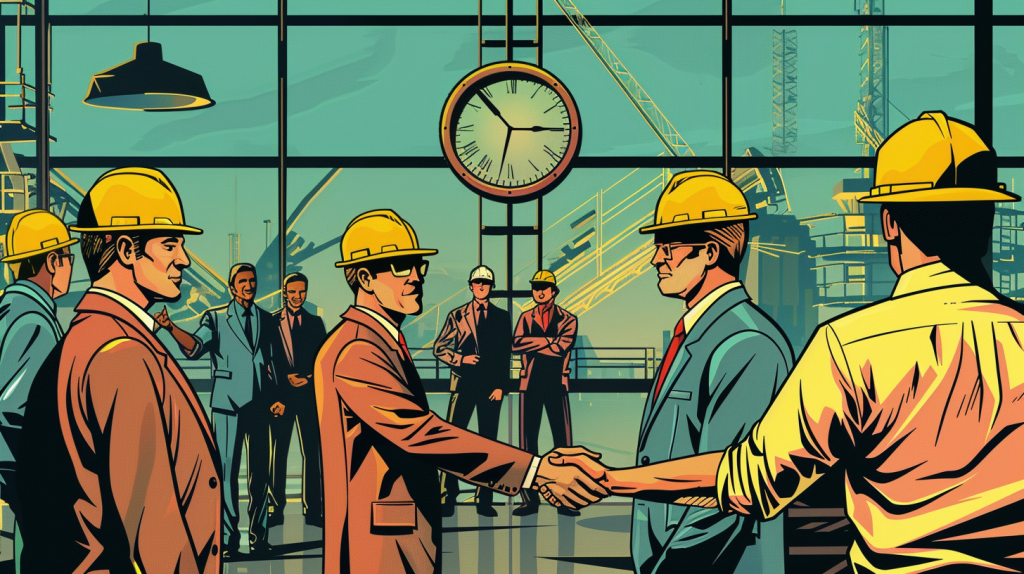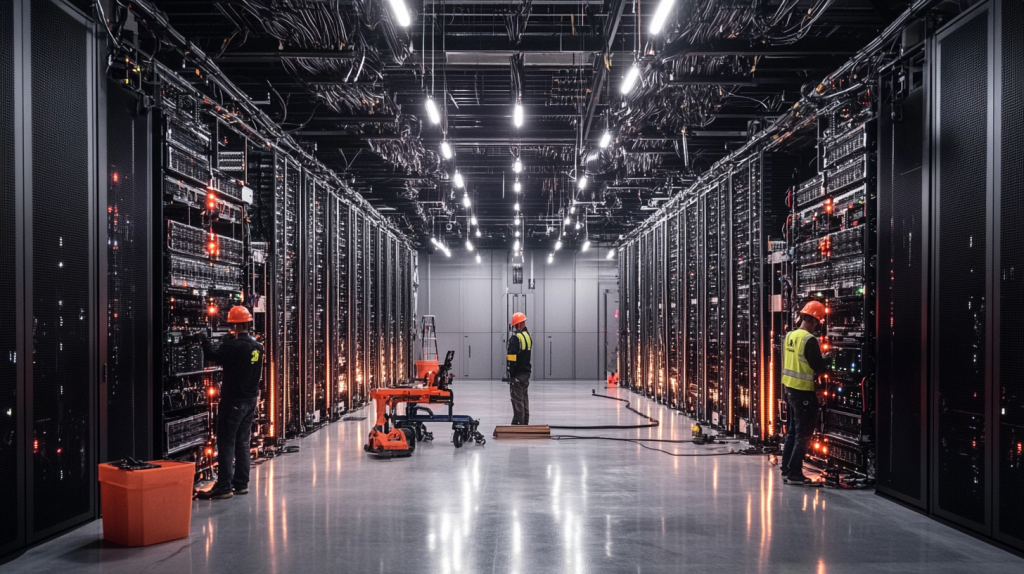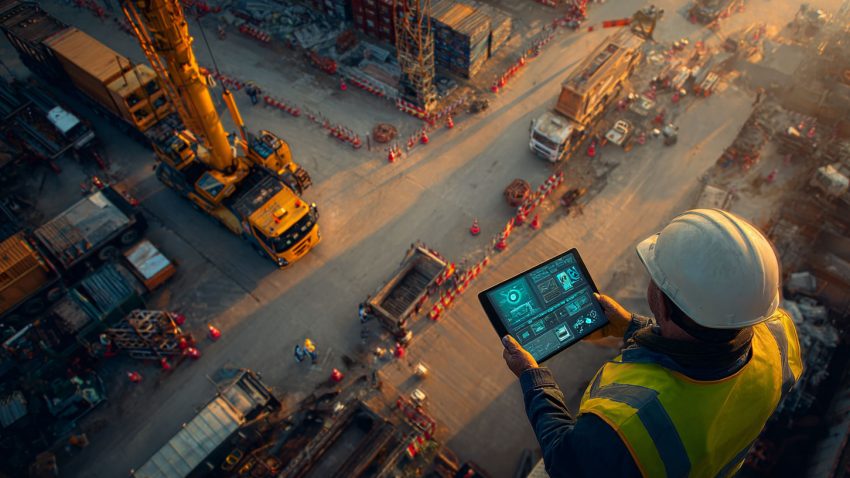Sustainable Data Center Construction: Best Green Building Practices for Sustainable and Mission-Critical Data Center Construction
Table of Contents:
Data centers are the digital backbone of our world, powering cloud computing, AI, and global communication. But there’s one major problem: they consume massive amounts of energy and resources. With sustainability becoming a top priority, the industry is shifting toward green building practices to reduce carbon footprints, improve efficiency, and create more sustainable facilities.
For mission-critical data centers, sustainability isn’t just about reducing environmental impact—it’s also about enhancing efficiency, cutting costs, and ensuring long-term energy resilience. Whether it’s water-saving cooling systems, renewable energy integration, or LEED-certified construction, the key to future-proofing data centers lies in adopting eco-friendly construction practices from day one.
This guide explores the best sustainable building strategies for data centers, helping project managers, engineers, and developers design energy-efficient, eco-friendly, and high-performance facilities that meet modern sustainability standards.

Data centers are the digital backbone of our world, powering cloud computing, AI, and global communication. But there’s one major problem: they consume massive amounts of energy and resources. With sustainability becoming a top priority, the industry is shifting toward green building practices to reduce carbon footprints, improve efficiency, and create more sustainable facilities.
For mission-critical data centers, sustainability isn’t just about reducing environmental impact—it’s also about enhancing efficiency, cutting costs, and ensuring long-term energy resilience. Whether it’s water-saving cooling systems, renewable energy integration, or LEED-certified construction, the key to future-proofing data centers lies in adopting eco-friendly construction practices from day one.
This guide explores the best sustainable building strategies for data centers, helping project managers, engineers, and developers design energy-efficient, eco-friendly, and high-performance facilities that meet modern sustainability standards.
Why Sustainable Construction Matters for Mission-Critical Data Centers
Sustainability in data center construction is no longer optional—it’s a business necessity. These facilities consume an estimated 1% of global electricity, with some hyperscale centers using as much power as a small city. With growing concerns over carbon emissions, resource consumption, and regulatory pressures, data centers must adopt green building strategies to remain compliant, cost-effective, and energy-efficient.
Mission-critical data centers require constant uptime, meaning they rely on backup power, extensive cooling infrastructure, and high-performance IT equipment. However, traditional construction methods and outdated energy practices lead to excess waste, inefficiencies, and high operational costs.
By incorporating sustainable materials, renewable energy sources, and efficient cooling technologies, data centers can dramatically reduce their environmental footprint while improving performance. Green construction also helps companies meet ESG (Environmental, Social, and Governance) goals, gain LEED certification, and qualify for government incentives for energy-efficient buildings.
Key Benefits
- Reduces carbon footprint and environmental impact.
- Lowers energy and operational costs.
- Ensures compliance with evolving sustainability regulations.
Best Practices
- Use energy-efficient materials and designs to reduce waste.
- Implement real-time sustainability tracking for environmental impact monitoring.
- Integrate renewable energy sources such as solar and wind.
Sustainable data center construction isn’t just about going green—it’s about enhancing long-term efficiency, reducing costs, and building facilities that meet modern energy demands.
Related Articles:
Best Guide to Data Center Construction Management Software: Manage Scheduling, Deliveries, and Compliance for Hyperscale Projects
Data Center Construction Deliveries: Best Real-Time Tracking Solutions for Managing Data Center Construction Deliveries
Data Center Construction: Top Delivery and Scheduling Strategies for Redundant Power Systems in Data Centers
Green Building Certifications and Standards for Data Centers
Sustainability isn’t just about good intentions—it’s about meeting real, measurable standards. Various green building certifications help data center developers and operators align with environmental best practices while maintaining operational efficiency.
Key Certifications for Sustainable Data Centers:
- LEED (Leadership in Energy and Environmental Design) – The gold standard for sustainable construction, focusing on energy efficiency, water conservation, and material use.
- ASHRAE 90.4 – Energy efficiency standards specific to data centers, guiding power usage, cooling efficiency, and design best practices.
- BREEAM (Building Research Establishment Environmental Assessment Method) – Used widely in Europe, focusing on sustainable building materials and design.
- Energy Star for Data Centers – A certification program that ensures data centers meet high-efficiency standards for power and cooling usage.
These certifications aren’t just about earning a green badge—they provide long-term cost savings, improve energy efficiency, and make data centers more attractive to environmentally conscious clients.
Key Benefits
- Improves energy efficiency and lowers operational costs.
- Helps companies meet corporate sustainability goals.
- Provides eligibility for tax credits and government incentives.
Best Practices
- Design buildings to meet LEED and ASHRAE 90.4 standards.
- Integrate smart building technologies to track sustainability metrics.
- Conduct regular energy audits to ensure compliance with green standards.
By aligning with green building certifications, data centers can stay ahead of regulatory changes, reduce energy costs, and improve environmental sustainability.
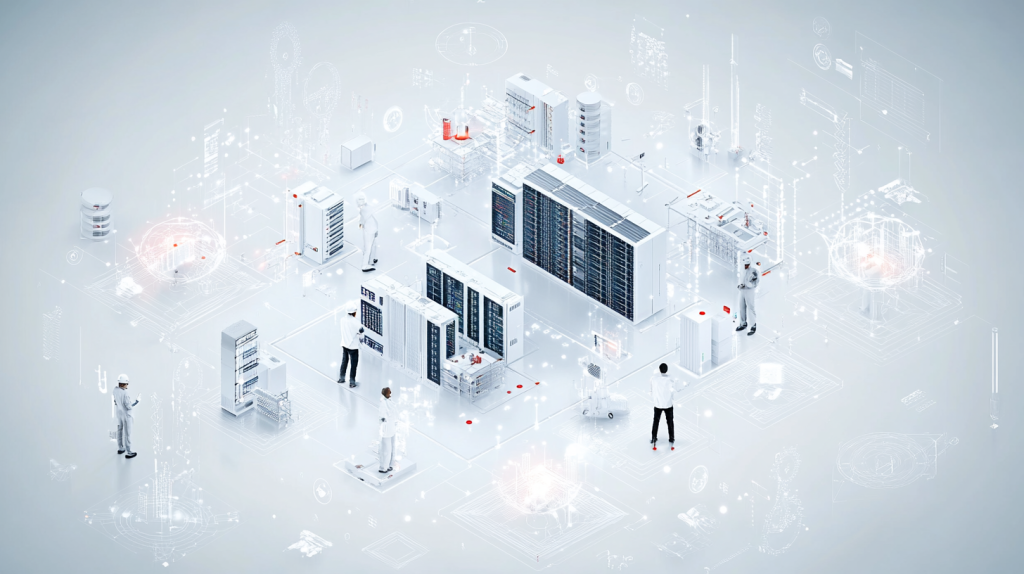
Energy-Efficient Cooling Systems for Sustainable Data Centers
Cooling accounts for up to 40% of total energy consumption in a data center, making efficient cooling one of the most critical aspects of sustainable construction. Traditional air conditioning systems are energy-intensive, but newer eco-friendly cooling solutions offer significant improvements.
Sustainable Cooling Technologies:
- Liquid Cooling Systems – Uses direct-to-chip cooling and immersion cooling, which are far more efficient than traditional air-based methods.
- Free Cooling (Airside & Waterside Economization) – Utilizes outside air or naturally cooled water to reduce reliance on mechanical cooling.
- Adiabatic Cooling – A hybrid system that cools air through evaporation, cutting down on electricity use.
- Thermal Energy Storage – Stores cooling energy during off-peak hours, reducing strain on the power grid.
By implementing these cutting-edge cooling solutions, data centers can cut energy consumption, lower operating costs, and improve sustainability metrics.
Key Benefits
- Reduces cooling-related energy costs by up to 50%.
- Enhances IT equipment longevity by maintaining optimal temperatures.
- Lowers carbon footprint by reducing mechanical cooling demands.
Best Practices
- Design facilities with free cooling capabilities in colder climates.
- Implement real-time temperature monitoring to optimize cooling efficiency.
- Use hybrid cooling strategies to balance efficiency and performance.
Adopting energy-efficient cooling systems is one of the most impactful ways to make a data center more sustainable, reducing energy waste while ensuring optimal performance.
Related Articles:
Hyperscale Data Center Construction: How to Simplify Multi-Tier Scheduling for Hyperscale Data Center Construction
Data Center Construction Scheduling: Best Workforce Scheduling Strategies to Improve Productivity in Data Center Construction
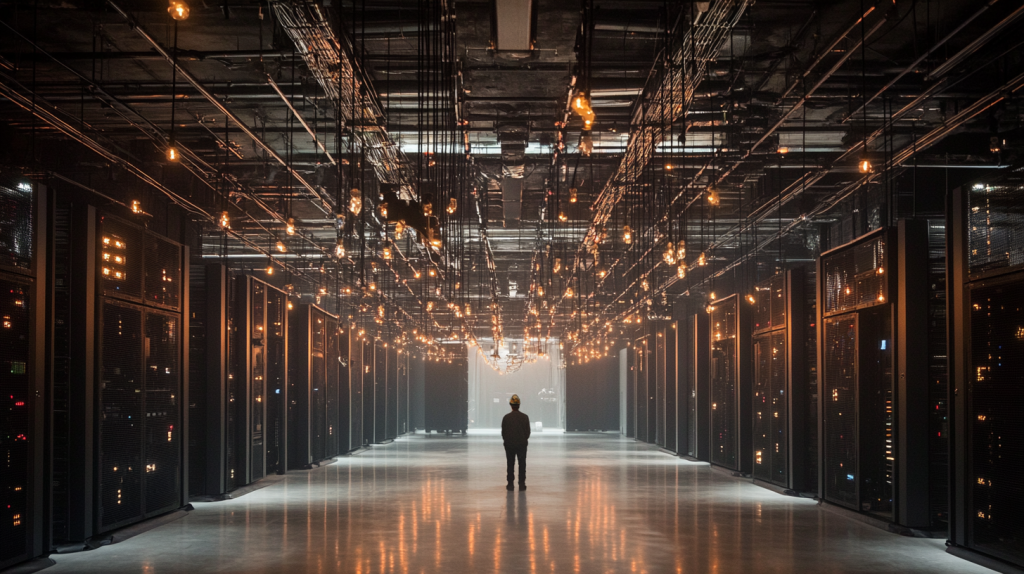
Implementing Renewable Energy Solutions in Data Center Construction
As global energy demands skyrocket, renewable energy solutions are becoming a cornerstone of sustainable data center construction. Traditional data centers rely heavily on grid electricity, diesel generators, and backup battery systems, leading to high carbon emissions and increasing operational costs. By integrating solar, wind, and hydrogen fuel technologies, modern data centers can reduce their carbon footprint while ensuring long-term energy resilience.
Key Renewable Energy Strategies for Data Centers
- On-Site Solar and Wind Power – Installing solar panels on rooftops and wind turbines on facility grounds allows data centers to generate their own clean energy while reducing reliance on the power grid.
- Power Purchase Agreements (PPAs) – Many data center operators partner with renewable energy providers to secure long-term, fixed-cost electricity from solar or wind farms, ensuring consistent energy supply without price volatility.
- Hydrogen Fuel Cells for Backup Power – Traditional diesel-powered backup generators are inefficient and environmentally harmful. Hydrogen fuel cells provide a clean, renewable backup power source, ensuring reliable uptime without greenhouse gas emissions.
- Battery Energy Storage Systems (BESS) – Pairing renewable energy with large-scale battery storage enables data centers to store excess solar or wind power for use during peak demand periods or grid outages.
By adopting these renewable energy solutions, data centers can transition away from fossil fuels, meet corporate sustainability goals, and take advantage of government tax incentives and energy rebates.
Key Benefits
- Reduces dependence on fossil fuels and stabilizes energy costs.
- Improves energy security by reducing reliance on the public power grid.
- Helps meet ESG (Environmental, Social, and Governance) and carbon neutrality goals.
Best Practices
- Conduct feasibility studies to determine the best renewable energy mix for the facility.
- Use AI-driven energy management systems to optimize renewable energy utilization.
- Partner with renewable energy providers to secure long-term green energy contracts.
Integrating renewable energy into data center construction future-proofs facilities, ensuring lower energy costs, reduced emissions, and greater operational resilience.
Using Sustainable Building Materials in Data Center Construction
The materials used in data center construction play a huge role in determining the project’s overall sustainability impact. From concrete and steel to insulation and flooring, every element contributes to the facility’s environmental footprint. By choosing eco-friendly, recycled, and locally sourced materials, data center developers can reduce waste, lower embodied carbon, and create healthier, more efficient buildings.
Top Sustainable Materials for Data Centers
- Low-Carbon Concrete – Traditional concrete is a major source of CO2 emissions. Using low-carbon concrete made with supplementary cementitious materials (SCMs) like fly ash and slag reduces emissions by up to 40%.
- Recycled Steel and Aluminum – Since data centers require extensive steel framing, using recycled steel significantly cuts down on raw material extraction and energy use.
- Cool Roofing and Reflective Materials – Roofing materials with high solar reflectance (SR) and thermal emittance (TE) help reduce heat absorption, lowering cooling energy demand.
- Sustainable Insulation – Using plant-based, recycled, or non-toxic insulation materials such as hempcrete or cellulose insulation helps improve thermal efficiency while minimizing environmental impact.
- Water-Resistant and Recyclable Flooring – Modular data center floors made from recyclable composite materials offer durability and ease of maintenance while reducing landfill waste.
By incorporating green building materials, data centers can lower construction emissions, improve building longevity, and create facilities that align with modern sustainability requirements.
Key Benefits
- Reduces embodied carbon footprint in construction.
- Improves building efficiency and long-term durability.
- Supports corporate sustainability goals and LEED certification.
Best Practices
- Work with suppliers that specialize in sustainable materials.
- Conduct life cycle assessments (LCAs) to evaluate material impact.
- Use modular construction techniques to minimize waste.
Sustainable materials ensure that data center construction projects are eco-friendly from the ground up, reducing environmental impact while improving energy efficiency.
Related Articles:
Best Guide to Construction Management Software
Data Center Construction Delivery Coordination: Efficient Scheduling Strategies for Modular Data Center Equipment Installations
The Best Guide to Delivery Management Systems (DMS) for Commercial Construction
Reducing Water Consumption in Sustainable Data Centers
Data centers are notorious for their high water consumption, especially in cooling operations. A single data center can use millions of gallons of water annually to keep IT equipment at optimal temperatures. With climate concerns and water scarcity on the rise, minimizing water usage is a critical aspect of sustainable data center design.
Water Conservation Strategies for Data Centers
- Liquid Cooling Systems – Instead of air-based cooling, direct-to-chip and immersion cooling technologies use non-conductive liquid coolants that require far less water than traditional methods.
- Closed-Loop Cooling Systems – By recirculating cooling water instead of constantly using fresh water, closed-loop systems reduce waste and improve efficiency.
- Rainwater Harvesting & Greywater Recycling – Collecting and treating rainwater or wastewater can supplement cooling tower needs, significantly lowering potable water usage.
- Adiabatic Cooling – A method that pre-cools air using evaporative water processes, reducing the need for traditional HVAC cooling.
- Smart Water Monitoring Systems – AI-driven water monitoring tools help track usage, detect leaks, and optimize cooling efficiency in real-time.
Key Benefits
- Lowers operational costs by reducing water consumption.
- Ensures compliance with water conservation regulations.
- Improves sustainability credentials for hyperscale data centers.
Best Practices
- Design facilities with water-efficient cooling technologies.
- Use water recycling systems to reduce overall consumption.
- Monitor real-time water usage with AI-powered analytics.
Water conservation is a key pillar of sustainable data center design, ensuring efficient cooling while reducing environmental impact.
AI and Automation for Real-Time Sustainability Monitoring
The most advanced data centers don’t just adopt sustainable practices—they use AI and automation to monitor, optimize, and continuously improve sustainability performance.
How AI Enhances Green Data Center Operations
- Energy Usage Optimization – AI-powered energy management systems predict demand, balance loads, and optimize power consumption, reducing waste.
- Predictive Maintenance – AI identifies inefficiencies in cooling systems, backup power, and HVAC equipment, ensuring preventative action before failures occur.
- Carbon Footprint Tracking – AI-powered dashboards track energy consumption, water use, and emissions in real-time, ensuring data center operators stay within sustainability targets.
- Automated Compliance Monitoring – AI tools ensure that facilities remain compliant with LEED, ASHRAE 90.4, and environmental regulations without manual tracking.
By integrating AI and automation, data center operators can achieve unmatched efficiency, improve energy conservation, and set new benchmarks in sustainable construction.
Key Benefits
- Enhances energy efficiency through real-time optimization.
- Reduces operating costs by preventing inefficiencies.
- Ensures continuous compliance with green building standards.
Best Practices
- Use AI-driven analytics to monitor power and cooling efficiency.
- Implement automated compliance tracking to meet sustainability goals.
- Optimize renewable energy integration with AI forecasting.
AI-powered sustainability monitoring elevates green data centers to the next level, making real-time energy and environmental management a reality.
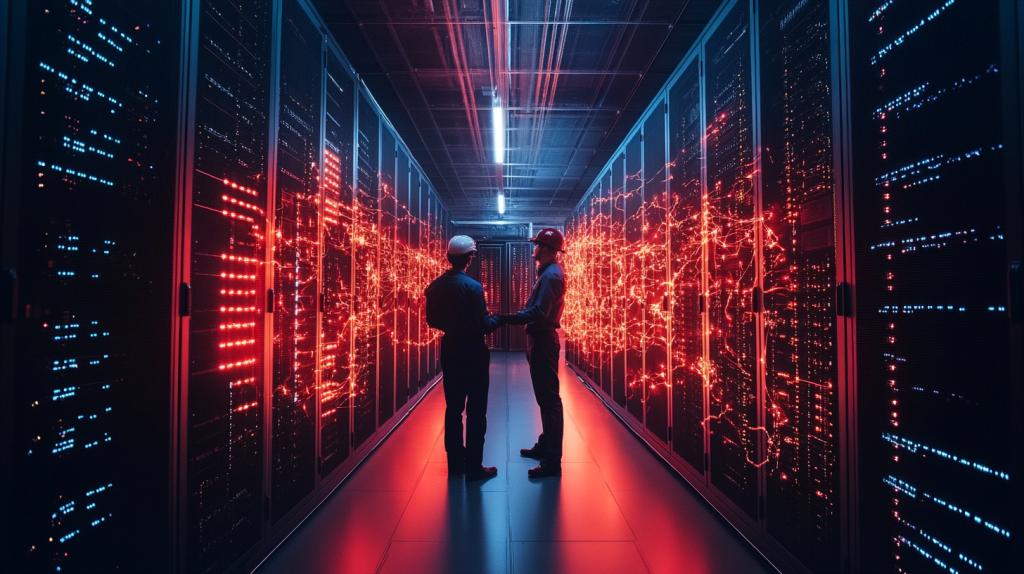
Unlock the Full Potential of Your Construction Projects with StruxHub
StruxHub enhances efficiency and coordination across all project phases, providing a single source of truth that eliminates silos and fosters collaboration. Real-time updates, financial management tools, and seamless commvunication features ensure that all team members and stakeholders are aligned and informed, reducing the risk of errors and delays. With comprehensive solutions for document management, risk mitigation, and quality control, StruxHub maintains project integrity and safety, while mobile access and integration capabilities further enhance project flexibility and efficiency.
StruxHub’s Key Features and Benefits:
- Advanced Delivery Management: Automate and optimize your delivery schedules, ensuring materials arrive just in time, every time.
- Site Communication: Utilize georeferenced maps and instant messaging to keep every team member informed and aligned.
- Construction Materials Management: Track inventory levels and manage materials procurement with ease, reducing waste and avoiding project delays.
- Construction Safety & Inspection Workflows: Implement customizable mobile forms for conducting safety inspections and managing compliance documentation effortlessly.
- Short-Term Scheduling: Visualize project tasks with detailed floor plans, linking each activity to specific locations for better planning accuracy.
- Construction Resource Management: Efficiently allocate personnel and equipment, maximizing productivity and reducing idle time.
StruxHub’s Product Offering:
- StruxHub Deliveries: Simplifies the coordination of incoming deliveries, ensuring materials and equipment are precisely timed to project needs.
- StruxHub Logistics: Offers intelligent site logistics planning, from crane scheduling to space allocation, for smoother operations.
- StruxHub Safety: Elevates on-site safety standards with easy-to-use tools for inspections, permits, and incident reporting.
- StruxHub Scheduling: Enhances project timelines with intuitive scheduling tools that ensure tasks are completed efficiently and on time.
With StruxHub, construction companies can look forward to a streamlined, more efficient project execution that delivers on time and within budget. Embrace the power of innovation and take your construction projects to the next level.
Don’t miss out on the opportunity to optimize your construction management processes with StruxHub. Sign up for a free demo today. Let’s build smarter, together.
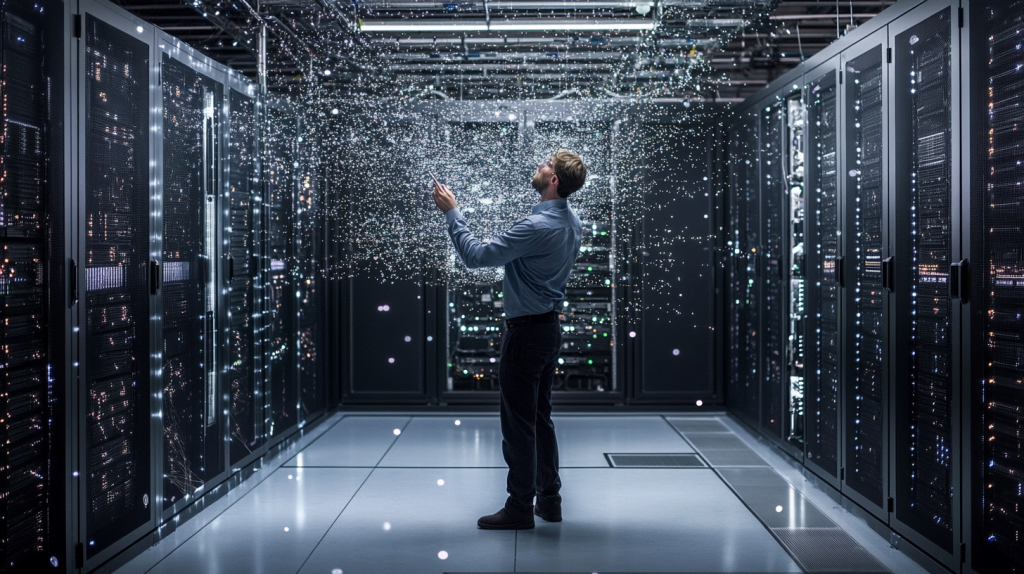
StruxHub
Experience the power of StruxHub today and witness firsthand how it can revolutionize your construction operations.
FAQ
Why is sustainability important in data center construction?
Sustainability in data center construction is no longer just a trend—it’s a necessity. Data centers consume massive amounts of energy and water, making them one of the biggest contributors to carbon emissions in the tech industry. As companies aim for carbon neutrality and governments introduce stricter environmental regulations, integrating green building practices is now a critical business decision.
One of the biggest benefits of sustainable construction is cost savings. By using energy-efficient cooling systems, renewable energy sources, and eco-friendly building materials, data centers can drastically reduce operational costs over time. Energy-efficient designs help cut power usage, while smart cooling solutions reduce water waste, resulting in lower monthly utility bills and long-term financial benefits.
Additionally, sustainability helps improve reliability. Many hyperscale data centers are now using solar, wind, and battery storage to ensure continuous uptime while reducing reliance on fossil fuels. With more businesses focusing on ESG (Environmental, Social, and Governance) goals, a sustainable data center also improves brand reputation, making it more attractive to investors and partners.
To stay ahead, many data centers pursue LEED certification and comply with ASHRAE 90.4 energy efficiency standards. These green building certifications help facilities meet global sustainability targets while securing government incentives and tax benefits.
How do green building certifications impact data center efficiency?
Green building certifications like LEED, Energy Star, and BREEAM ensure that data centers are designed and operated with energy efficiency, water conservation, and sustainability in mind. These certifications require facilities to meet rigorous environmental standards, reducing their impact on the planet while improving long-term operational efficiency.
For example, a LEED-certified data center must use low-carbon building materials, energy-efficient lighting, and advanced cooling systems to minimize waste and emissions. In return, these facilities experience lower energy consumption, reduced maintenance costs, and better performance in extreme weather conditions.
Certified data centers also tend to attract more clients and investors. Many businesses prioritize working with sustainable service providers to align with their own ESG commitments. Having an official green certification demonstrates leadership in energy efficiency and environmental responsibility, making a data center more competitive in the market.
To achieve these certifications, data centers should integrate real-time sustainability monitoring, use recyclable construction materials, and adopt energy-efficient infrastructure. Platforms like StruxHub Compliance can help track sustainability metrics, ensuring that data centers meet certification requirements and regulatory compliance throughout construction and operation.
What are the best cooling solutions for energy-efficient data centers?
Cooling accounts for nearly 40% of a data center’s total energy consumption, making efficient cooling systems a critical factor in sustainability and cost reduction. Traditional air-based cooling solutions are inefficient and power-hungry, but modern green cooling technologies can help drastically cut energy use.
One of the most effective cooling solutions is liquid cooling. By circulating a non-conductive liquid directly over heated components, liquid cooling absorbs heat more efficiently than traditional air conditioning systems. Immersion cooling—where entire servers are submerged in a specialized cooling fluid—is also becoming popular in hyperscale data centers.
Another approach is free cooling, which utilizes naturally cold air or water sources to cool IT equipment without heavy reliance on mechanical chillers. Airside economization takes advantage of cool outdoor temperatures, while waterside economization uses naturally chilled water from lakes or underground reservoirs.
Adiabatic cooling, which pre-cools air through evaporative cooling processes, also reduces electricity consumption by minimizing the use of traditional AC systems. Some data centers are now implementing heat reuse technologies, where excess heat from IT equipment is captured and repurposed for heating nearby buildings.
By combining AI-driven cooling management, liquid cooling, and free cooling techniques, data centers can significantly lower energy use, improve performance, and extend the lifespan of their equipment.
How can AI improve sustainability in data center operations?
Artificial Intelligence (AI) is revolutionizing sustainability in data centers by automating energy management, predicting equipment failures, and optimizing power consumption. Instead of relying on manual monitoring and reactive maintenance, AI-driven systems provide real-time insights into how energy, water, and cooling resources are being used.
For instance, AI-powered predictive analytics can forecast energy demand fluctuations, allowing operators to adjust power loads dynamically. If a particular server cluster is running below capacity, AI can redistribute workloads to optimize energy use while reducing unnecessary power consumption.
AI also enhances cooling efficiency by tracking temperature fluctuations, humidity levels, and airflow dynamics in real time. By automatically adjusting fan speeds, liquid cooling rates, and cooling tower operations, AI can help cut down cooling-related energy costs without compromising performance.
One of the most promising applications of AI in sustainability is carbon tracking and reporting. Many enterprises now require data centers to report their energy usage and emissions data for ESG compliance. AI-powered sustainability dashboards help facilities track and report carbon footprints, ensuring compliance with global green building certifications.
With machine learning algorithms continuously improving energy efficiency, AI is becoming a key tool in reducing costs, improving sustainability metrics, and enhancing overall data center operations.
What role do renewable energy sources play in data center sustainability?
As data center energy consumption grows, the transition to renewable energy sources is critical for reducing carbon emissions and improving long-term sustainability. Many of the world’s largest cloud providers have committed to running their data centers on 100% renewable energy, leading the charge toward a greener digital future.
One of the most widely used renewable energy solutions is solar power. Many data centers install solar panels on rooftops or adjacent land to generate clean, on-site electricity. Similarly, wind power purchase agreements (PPAs) allow data center operators to source wind-generated electricity from utility providers, ensuring a steady supply of renewable energy without relying on fossil fuels.
Hydropower and battery energy storage systems (BESS) play a crucial role in balancing power demand and supply, allowing excess renewable energy to be stored for later use. Some data centers are also experimenting with green hydrogen fuel cells to replace traditional diesel-powered backup generators.
By integrating renewable energy with AI-powered energy management systems, data centers can reduce reliance on the grid, lower operational costs, and achieve long-term sustainability goals. Governments and regulatory bodies often offer tax incentives and subsidies to encourage the adoption of clean energy, making renewables an attractive investment.
For mission-critical data centers, renewable energy isn’t just about going green—it’s about ensuring energy security, cost stability, and resilience against power disruptions.
